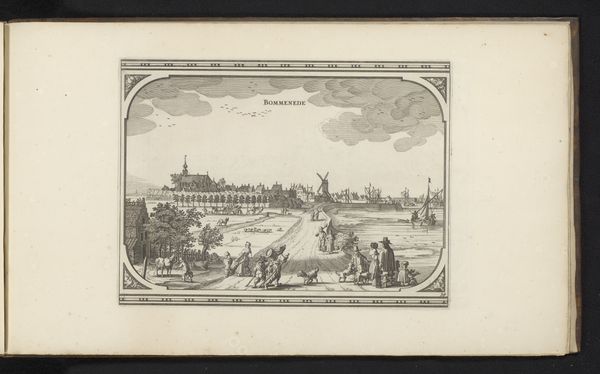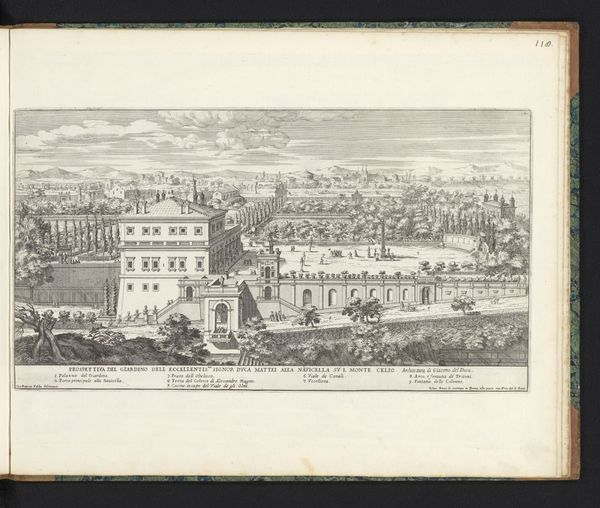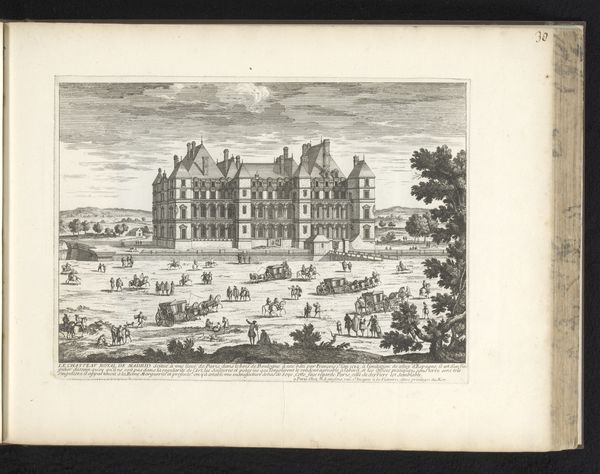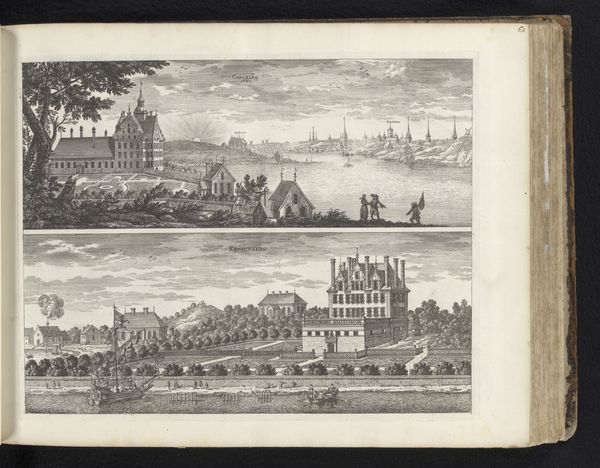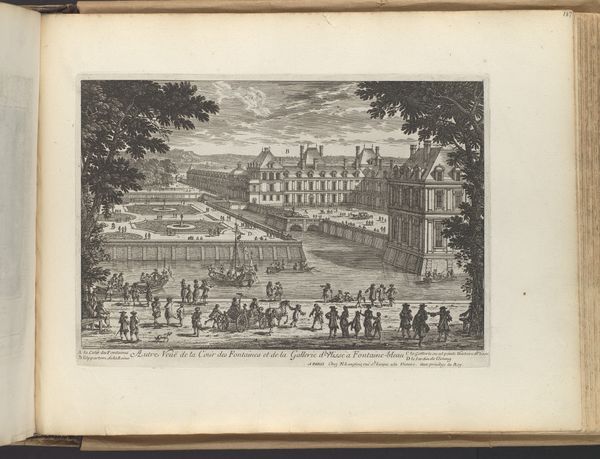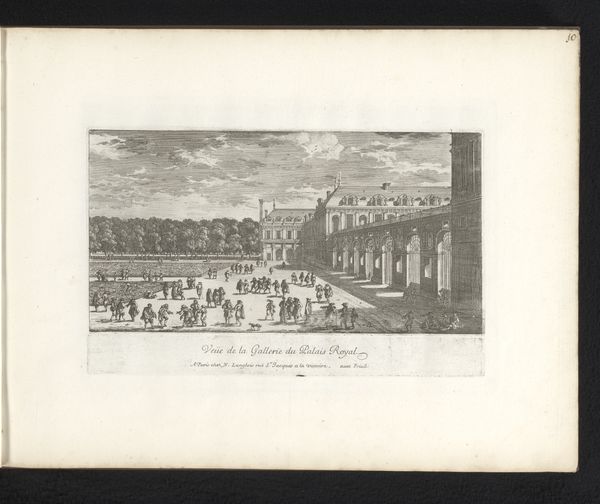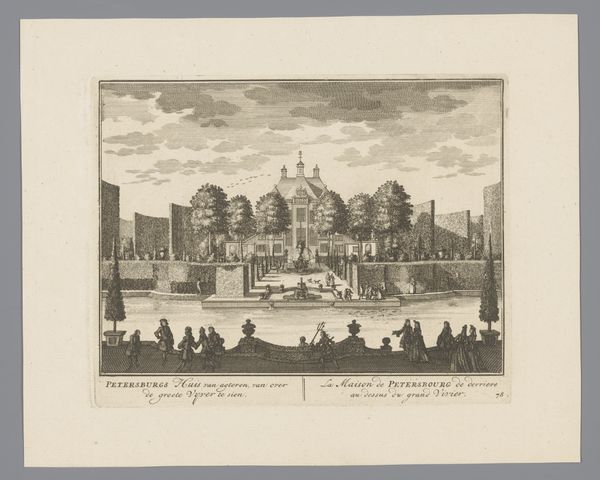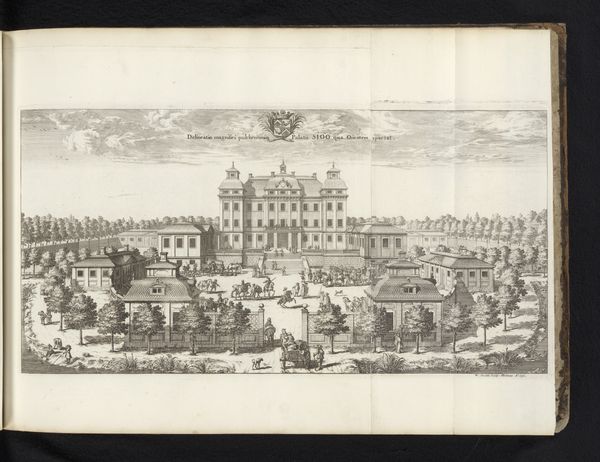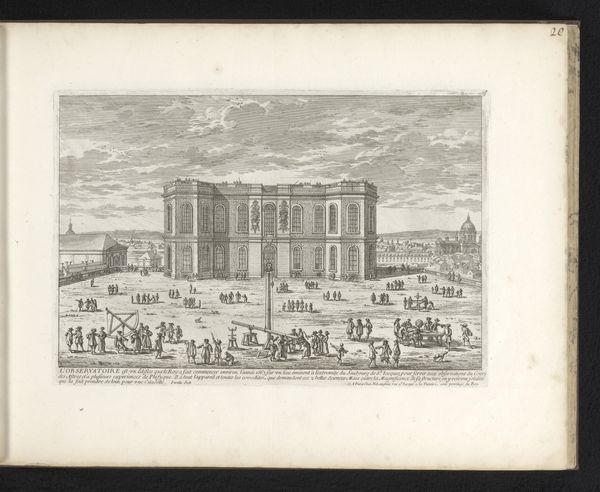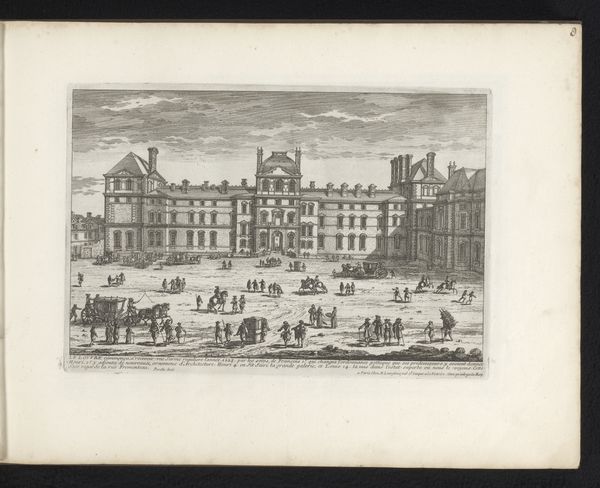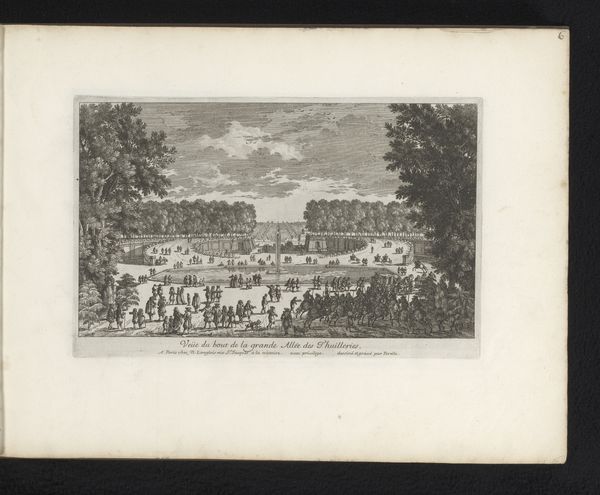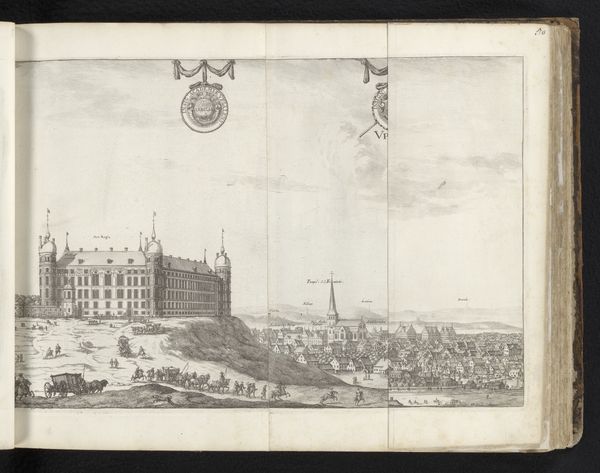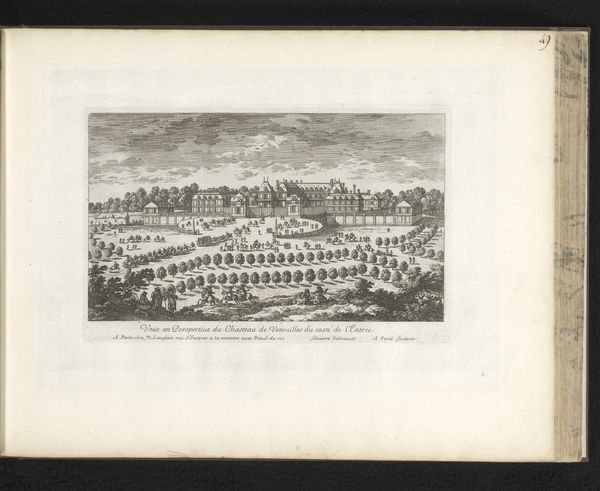
print, engraving
baroque
landscape
cityscape
engraving
Dimensions: height 154 mm, width 245 mm
Copyright: Rijks Museum: Open Domain
Curator: This is Adam Perelle’s "View of the Palais du Luxembourg from the Garden,” created between 1660 and 1695. It’s an engraving, offering a detailed glimpse into the palace and its surroundings. Editor: Immediately, I notice the meticulous attention to linear perspective. The formal garden design creates a structured viewing experience, guiding the eye back towards the palatial structure. The cool tonality contributes to a composed and dignified mood. Curator: Indeed. Perelle was part of a broader printmaking culture that catered to a burgeoning market for representations of power and prestige. Consider how this image disseminates the visual vocabulary of baroque authority to a wider audience through the relatively accessible medium of print. Editor: Certainly, the palace dominates the composition. I’m interested in how Perelle uses line to convey the opulence of the building's facade. The carefully placed figures within the garden offer a sense of scale and bring the architecture into immediate relation with the human form, becoming an extension of dynastic prestige. Curator: Absolutely. The placement of the figures in the foreground is very interesting. It creates an idealized social tableau. It’s crucial to think about who this image was meant to serve – landowners looking to see the visual authority on display or the common person curious about the rich at play. Editor: I'm struck by how the regularity of the palace is emphasized, against which the artist introduces the organic flow of garden design and groupings of human activity. It's a sophisticated counterpoint of constructed artifice and natural life. Curator: And the reproducibility of engravings played a huge role. By making such architectural wonders visible, they were contributing to the ongoing process of establishing French hegemony during the period. We might view this print as less an objective "view," and more an active part of a propaganda and image-making process. Editor: So true; dissecting its structure reveals a subtle but persuasive promotion of baroque ideals of control and elegance. Looking closer brings so much more to light about the intentions behind this artwork, which might easily be missed at a passing glance. Curator: Thinking about production and dissemination certainly adds another dimension to our experience. Thank you for these insightful details to note in this cityscape view.
Comments
No comments
Be the first to comment and join the conversation on the ultimate creative platform.

